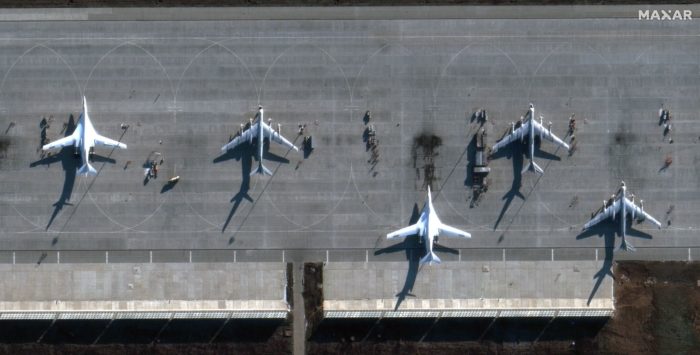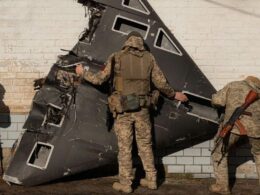On the very last day of 2022, which was the year of resilience and harsh fighting for Ukraine, Russia once again proved its terroristic nature. Several missile strikes and dozens of attack drones were launched against Ukrainian cities.
As Russian forces could not overcome Ukrainians on the battlefield in conventional warfare during the last 10 months of fighting, forced to perform “strategic retreats” in at least three key directions, now they seek retaliation by targetting unarmed civilians and civil objects. Unfortunately, they still can do so due to their superiority in force and capabilities in the aerial dimension. At the same time, a few recent cases demonstrate that Ukraine found a way to weaken the enemy’s air component.
Attacks on Engels and Dyagilevo airbase
As such, on 5 December 2022, two Russian military airbases: the airbase in Engels, Saratov Oblast, and Dyagilevo, near Ryazan, were targeted, resulting in damage to aircraft and losses in personnel.
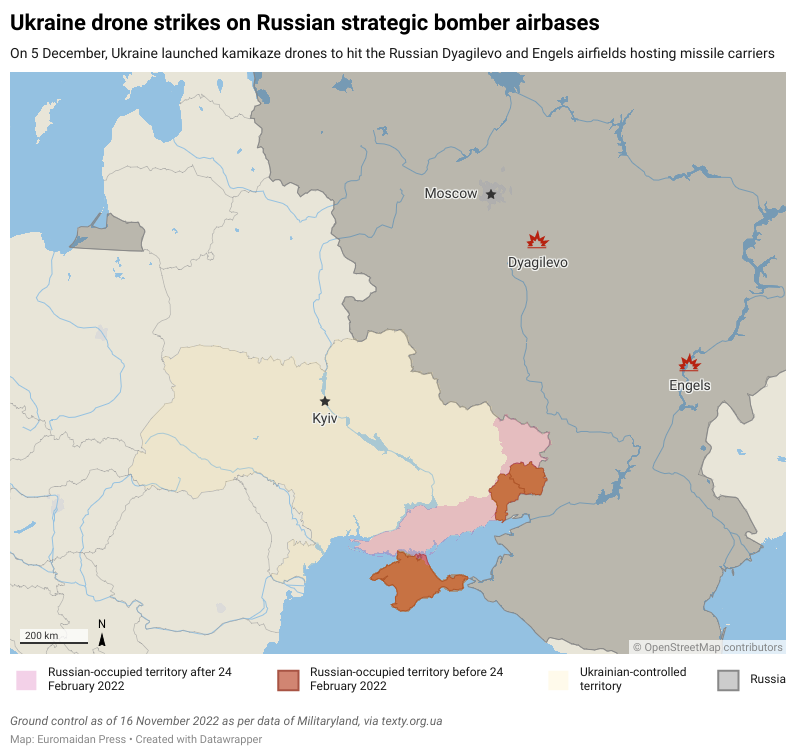
Three weeks later, on December 26, the same military airbase in Engels was attacked for the second time in a row, and three days later, yet again
.
Located deep inside the Russian territory, about 600 km away from the Ukrainian border, the airbase is considered a strategically important object, a home to nuclear-capable bombers. Precisely from there, Russian strategic bombers take off to conduct missile strikes against Ukraine. Symbolically, the latest accident took place on the same day the Russian army celebrates its Anti-air Defense Forces Day.
Based on this, at least a few conclusions can be made.
- First, the events disclose the extreme vulnerability of the Russian strategic military objects and Russia's inability to provide a proper defense. Notably, the Engels airbase functions as a military object all year round – also, in “peaceful times,” That is, the base should have had a proper defense to withstand air threats. The reality proved the opposite.
- Second, the events point to Russia’s zero-level resilience and inability to recover. The commandment proved unable to provide such a defense three weeks after the first strike, when it was clear that the base became a target. This indicates that no lessons were learned and no actions were taken after the first strike–something RUSI called “a tendency to reinforce failure” as a distinctive feature of the Russian armed forces.
- Third, apart from humiliation, the attacks also have a strong psychological effect on regular Russian citizens, demonstrating that the war is taking place throughout the territory of Russia as well. It is not just a localized “military conflict,” fought somewhere in Donbas. Nor it is a “war in Ukraine,” as introduced by Russian propaganda and oftentimes echoed by Western media. On the contrary, the attacks deep inside Russia show that everyone is engaged in the war, everyone is responsible, and everyone is vulnerable.
- Fourth, the series of attacks demonstrate the increased eagerness of Ukrainian forces to conduct long-range strikes on the enemy’s territory. The effectiveness and high precision of such strikes against military objects such as the Engels airbase can serve as another argument in favor of providing Ukraine with long-range systems.
- Fifth and most important, it is the character of such attacks: preventive strikes allow Ukraine to buy time. That is because each successful attack against the Russian strategic aviation base prevents Russian forces from conducting another massive missile strike. Simply put, it is wiser to destroy the enemy’s aircraft while it is still based on the airfield, on the land, being a stationary target – rather than repelling attacks when it is in the air.
Striking preventively means avoiding the very need to strike back
The idea of the tactics, built into a larger picture of the Ukrainian Air Force warfare strategy, is reflected, among others, in the article by LTG Mykhailo Zabrodskyi on the current Russo-Ukrainian aerial warfare: Patriotic War. Rivalry in the Air
. The author is known as a legendary military, Commander of the Ukrainian Air Assault Forces during 2015-2019, currently the First Deputy Chairman of the National Security, Defense and Intelligence Committee of the Parliament.
In this exemplary piece of military analysis, Zabrodskyi overviews the current state of affairs of the Russian Air Forces, their combat potential, the reasons why Russia failed to fulfill its original plan in Ukraine, the availability of resources, as well as the factors working “for” and “against” the enemy which, all together, allow predicting the enemy’s behavior in the future. Also, he presents a vision of what steps should Ukraine take now to enable more effective warfighting.
Speaking in military slang, Ukraine needs to focus on building up two fundamental components – the air "shield" and the "sword," that is, the defensive and offensive capabilities of aerial warfare, correspondingly.
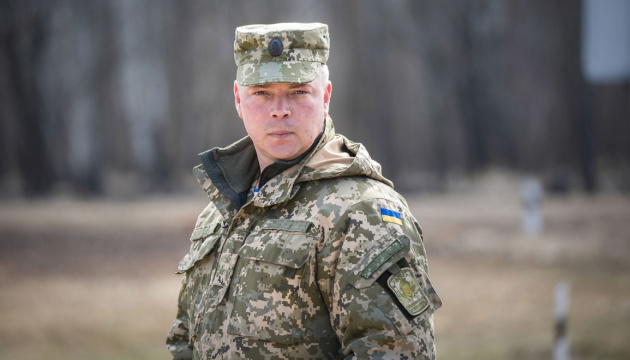
The first and foremost thing one needs to keep in mind is that back in February 2022, Russia had superiority in combat potential compared to Ukraine, and is still prevailing as of today, the author says.
However, the Russian forces proved unable to make use of it in most of the warfare dimensions: on land, in the sea, and in the air.
Zabrodskyi explains that originally, Russia made a bet on its undoubted superiority in the air, which was supposed to guarantee its smooth advance on the land with a quick take-over of the key strategic objects. This plan simply wrote off Ukrainian Air Defense and aviation, assuming that they would stop existing within the first couple of days or a week.
However, in reality, the Ukrainian Air Defense and aviation withstood, which allowed using the enemy’s miscalculation to win time.
Since then, the entire tactics of the Russian forces were reactive and situational. The originally planned “grand” Russian Strategic Air Offensive failed, forcing the enemy to look for ad-hoc, sporadic, and strategically unwise decisions.
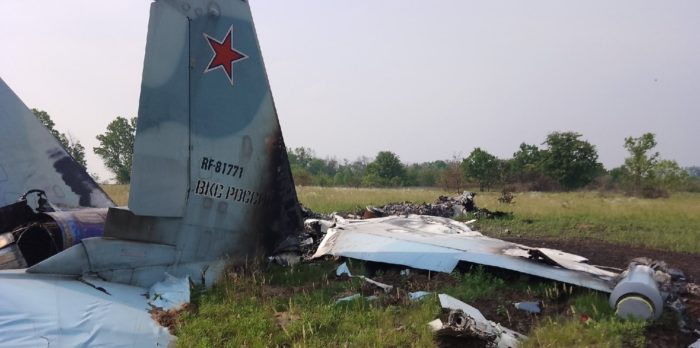
For instance, this can explain the “Iranian deal” – the “superpower's” need to purchase kamikaze drones from Iran, as well as the shift towards missile terror tactics against the civilian population.
Today, the situation is far from being advantageous for Ukraine, given that massive missile strikes and attack drones still represent mortal danger. However, as stressed by the author, “[...] what is happening is significantly different from what was planned to have happened more than a half year ago by the Russian leadership.”
The question is: what should Ukraine do in the current circumstances?
Talking about the aerial “sword,” or Ukraine’s offensive capabilities, Zabrodskyi believes this should primarily be combined strikes against the enemy’s stationary targets, namely, the airfields where Russia locates its attack aircraft and the areas from where it launches ballistic and cruise missiles. And while December attacks on Russia's Engels and Dyagilevo airbases were unofficially attributed to Ukrainian attack UAVs, Zabrodskyi suggests there are two ways to enable such strikes in the future, referring to the means, needed for hitting targets in the enemy’s territory “at least to a depth of 150...250 km.”
Three things Ukrainian drone strikes on Russian strategic airbases change in the war
The first is to expand the capabilities of strike aviation – this can be reached if more advanced aircraft models and missile weapons are introduced. The second is to grow up the range of the MLRS systems, primarily, M-142 HIMARS equipped with ATACMS missiles.
Overall, Ukraine has already proved it is able to overcome the enemy by applying the “smart” strategy of warfighting. While Ukrainian forces cannot exceed the Russian forces in terms of quantity, they can beat the enemy in terms of quality.

Kateryna Kistol is an expert in International Relations, Defence & Security, and Information Security, University College London Alumni.
Related:
- Three things Ukrainian drone strikes on Russian strategic airbases change in the war
- Explosions reported in airfields of strategic aviation bases of Russia
- Ukraine’s air defense improved fourfold since start of Russian invasion
- Ukraine needs the capability to attack Russian airfields – former commander US Army Europe
- Ukraine needs long-range missiles to really win the war, country’s top generals say

